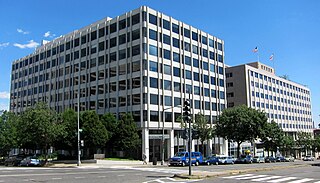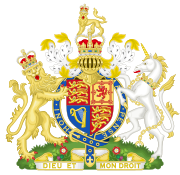
A waqf, also called a ḥabs, or mortmain property, is an inalienable charitable endowment under Islamic law. It typically involves donating a building, plot of land or other assets for Muslim religious or charitable purposes with no intention of reclaiming the assets. A charitable trust may hold the donated assets. The person making such dedication is known as a waqif ('donor') who uses a mutawalli ('trustee') to manage the property in exchange for a share of the revenues it generates. A waqf allows the state to provide social services in accordance with Islamic law while contributing to the preservation of cultural and historical sites. Although the waqf system depended on several hadiths and presented elements similar to practices from pre-Islamic cultures, it seems that the specific full-fledged Islamic legal form of endowment called waqf dates from the 9th century AD.

A charitable trust is an irrevocable trust established for charitable purposes. In some jurisdictions, it is a more specific term than "charitable organization". A charitable trust enjoys varying degrees of tax benefits in most countries and also generates goodwill. Some important terminology in charitable trusts includes the term "corpus", referring to the assets with which the trust is funded, and the term "donor," which is the person donating assets to a charity.

Trustee is a legal term which, in its broadest sense, is a synonym for anyone in a position of trust and so can refer to any individual who holds property, authority, or a position of trust or responsibility for the benefit of another. A trustee can also be a person who is allowed to do certain tasks but not able to gain income. Although in the strictest sense of the term a trustee is the holder of property on behalf of a beneficiary, the more expansive sense encompasses persons who serve, for example, on the board of trustees of an institution that operates for a charity, for the benefit of the general public, or a person in the local government.

Ultra vires is a Latin phrase used in law to describe an act that requires legal authority but is done without it. Its opposite, an act done under proper authority, is intra vires. Acts that are intra vires may equivalently be termed "valid", and those that are ultra vires termed "invalid".

A charitable organization or charity is an organization whose primary objectives are philanthropy and social well-being.

A benefit society, fraternal benefit society, fraternal benefit order, friendly society, or mutual aid organization is a voluntary association formed to provide mutual aid, benefit, for instance insurance for relief from sundry difficulties. Such organizations may be formally organized with charters and established customs or may arise ad hoc to meet the unique needs of a particular time and place.
A 501(c) organization is a nonprofit organization in the federal law of the United States according to Internal Revenue Code. Such organizations are exempt from some federal income taxes. Sections 503 through 505 set out the requirements for obtaining such exemptions. Many states refer to Section 501(c) for definitions of organizations exempt from state taxation as well. 501(c) organizations can receive unlimited contributions from individuals, corporations, and unions.

McPhail v Doulton[1970] UKHL 1, also known as Re Baden's Deed Trusts is a leading English trusts law case by the House of Lords on the certainty of beneficiaries. It held that so long as any given claimant can clearly be determined to be a beneficiary, or not, a trust is valid. The Lords also remanded the case to the Court of Appeal to be decided on this new legal principle as Re Baden's Deed Trusts .

English trust law concerns the protection of assets, usually when they are held by one party for another's benefit. Trusts were a creation of the English law of property and obligations, and share a subsequent history with countries across the Commonwealth and the United States. Trusts developed when claimants in property disputes were dissatisfied with the common law courts and petitioned the King for a just and equitable result. On the King's behalf, the Lord Chancellor developed a parallel justice system in the Court of Chancery, commonly referred as equity. Historically, trusts have mostly been used where people have left money in a will, or created family settlements, charities, or some types of business venture. After the Judicature Act 1873, England's courts of equity and common law were merged, and equitable principles took precedence. Today, trusts play an important role in financial investment, especially in unit trusts and in pension trusts. Although people are generally free to set the terms of trusts in any way they like, there is a growing body of legislation to protect beneficiaries or regulate the trust relationship, including the Trustee Act 1925, Trustee Investments Act 1961, Recognition of Trusts Act 1987, Financial Services and Markets Act 2000, Trustee Act 2000, Pensions Act 1995, Pensions Act 2004 and Charities Act 2011.

Vandervell v Inland Revenue Commissioners [1967] 2 AC 291 is a leading English trusts law case, concerning resulting trusts. It demonstrates that the mere intention to not have a resulting trust does not make it so.

Re Vandervell Trustees Ltd [1974] EWCA Civ 7 is a leading English trusts law case, concerning resulting trusts.

Charitable trusts in English law are a form of express trust dedicated to charitable goals. There are various advantages to charitable trust status, including exemption from most forms of tax and freedom for the trustees not found in other types of English trusts. To be a valid charitable trust, the organization must demonstrate both a charitable purpose and a public benefit. Applicable charitable purposes are normally divided into categories for public benefit, including the relief of poverty, the promotion of education, the advancement of health and saving of lives, the promotion of religion, and all other types of trusts recognized by the law. There is also a requirement that the trust's purposes benefit the public, and not simply a group of private individuals.

The Recreational Charities Act 1958 was an Act of the Parliament of the United Kingdom that was repealed in its entirety by the Charities Act 2011.

The cy-pres doctrine in English law is an element of trusts law that deals with charitable trusts. The doctrine states that when such a trust has failed because its purposes are either impossible or cannot be fulfilled, the High Court of Justice or the Charity Commission can issue an order redirecting the trust's funds to the nearest possible purpose. For charities worth under £5,000 and without land, the trustees may decide to redirect the trust's funds. The doctrine was initially part of ecclesiastical law, originating from the Norman French phrase cy près comme possible, but similar and possibly ancestral provisions have been found in Roman law, both in the Corpus Juris Civilis and later Byzantine law.
In English law, a purpose trust is a trust created for the fulfillment of a purpose, not for the benefit of a person. These are normally considered invalid by the courts because they have no legally recognized beneficiaries, therefore nobody to enforce the trust, with the exception of charitable trusts, which are enforceable by the Attorney General as they represent the public interest. As well as charitable trusts, there are several exceptions to the rule against purpose trusts. If the requirement to fulfill a purpose is a request, rather than an obligation, the trust is valid; a trust will also be found valid if, while being for a purpose, it involves beneficiaries in some respect. Purpose trusts can also be valid if they are for the erection or maintenance of tombs and memorials, the maintenance of animals, and arguably the saying of masses, although these must all obey the rule against perpetuities and not continue for more than 21 years after the testator's death.

Leahy v Attorney-General for New South Wales is an Australian and English trusts law case involving a charitable trust, heard by the High Court of Australia in 1958, and the Privy Council in 1959. The proceeding concerned the validity a gift to an unincorporated body, concluding that gifts in trust "cannot be made to a purpose or to an object" except for charitable circumstances.
The beneficiary principle is a policy of English trusts law, and trusts in Commonwealth jurisdictions, that trusts which do not have charitable objects, as under the UK Charities Act 2006 sections 2 and 3, and also do not make the trust property available for the benefit of defined people, are void.

The Charities Act 2011 is a UK act of Parliament. It consolidated the bulk of the Charities Act 2006, outstanding provisions of the Charities Act 1993, and various other enactments.
The Concurrent List or List-III is a list of 52 items given in the Seventh Schedule to the Constitution of India. It includes the power to be considered by both the union and state government. The legislative section is divided into three lists: Union List, State List and Concurrent List. Unlike the federal governments of the United States, Switzerland or Australia, residual powers remain with the Union Government, as with the Canadian federal government.

The Charities Regulator is the operational name of the Charities Regulatory Authority, the statutory authority responsible for the regulation of charities in Ireland. The organisation is made up of a board, with four sub-committees, and as of 2019, a staff of 38, including a chief executive.














